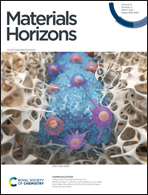Revisiting staining of biological samples for electron microscopy: perspectives for recent research
Abstract
This review revisits essential staining protocols for electron microscopy focussing on the visualization of active sites, i.e. enzymes, metabolites or proteins, in cells and tissues, which have been developed 50 to 60 years ago, however, never were established as standard protocols being used in electron microscopy in a routine fashion. These approaches offer numerous possibilities to expand the knowledge of cellular function and specifically address the localization of active compounds of these systems. It is our conviction, that many of these techniques are still useful, in particular when applied in conjunction with correlative light and electron microscopy. Revisiting specialized classical electron microscopy staining protocols for use in correlative microscopy is particularly promising, as some of these protocols were originally developed as staining methods for light microscopy. To account for this history, rather than summarizing the most recent achievements in literature, we instead first provide an overview of techniques that have been used in the past. While some of these techniques have been successfully implemented into modern microscopy techniques during recent years already, more possibilities are yet to be re-discovered and provide exciting new perspectives for their future use.

- This article is part of the themed collection: Recent Review Articles


 Please wait while we load your content...
Please wait while we load your content...